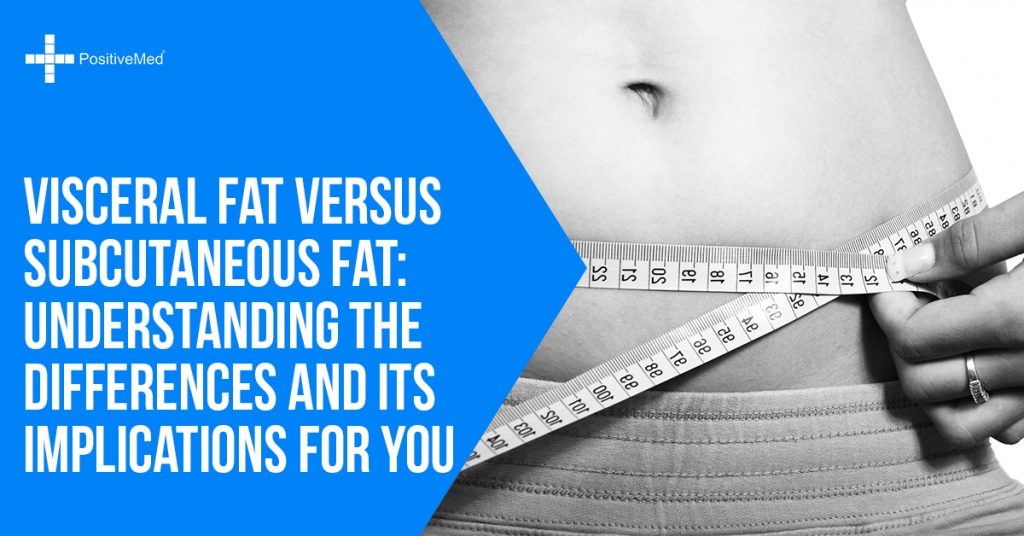Weight loss is something that everyone is concerned about at one point in their lives since we all have that innate desire to look our best. Most people know that visceral fat is unhealthy in many ways. Not only does body fat make you more self-conscious of your body when you go out in public but it can be a contributing factor to a wide range of unwanted health conditions.
However, even though you may have a healthy body weight, you can still suffer from an excessive amount of visceral fat. Dangerous visceral fat can influence the overall health of your body while depleting nutrients and preventing normal biological and metabolic processes throughout the body. Moreover, internal body fat can pose a risk to your health even if you are slim and not overweight.

What is Visceral Fat?
There are two types of body fat that are quite different from each other – visceral fat and subcutaneous fat. Subcutaneous fat is that type of fat that can be found directly under the skin and is common in the stomach, thighs, hips, and even the buttocks. On the other hand, visceral fat is “deep” fat that is stored further underneath the skin and forms a gel-like fat that wraps around major organs.
Related link: Get Rid of Fat Belly FAST By Drinking THIS Homemade Weight-Loss Drink Every Morning
Visceral fat can be found in essential organs like the heart, intestines, liver, lungs, pancreas and the kidneys and may pose a health risk if not managed correctly. Generally, visceral fat located deep within the midsection may not be as pronounced or easy to identify as subcutaneous fat that causes annoying and unwanted signs of obesity. These types of fat cells don’t just accumulate in your body but have the potential to alter the way your body functions and reacts.
Essentially, the presence of visceral fat can leave you vulnerable to many different health conditions. This type of fat is actually linked to diabetes, blood pressure, cholesterol, and insulin sensitivity. With that being said, the more of this type of fat is present near your internal organs, the more at risk you are for health complications including:
• Arthritis
• Cancer(s)
• Diabetes (Type 2)
• Dementia
• Heart disease
• High cholesterol
• Metabolic symptoms
• Obesity
• Stroke
How Visceral Fat Effects Your Cells
According to research conducted by scientists at the Harvard Medical School, fat can be thought of as an endocrine organ or gland that produces hormones and other substances that influence the health of the body. They have discovered that excessive body fat disrupts the normal balance and functioning of hormones throughout the body and that visceral fat causes the immune system to produce chemicals called cytokines. These cytokines are proteins that have a direct effect on the interaction between cells in the body.
The accumulation of these proteins increase the risk of dangerous health conditions that mainly effect the circulatory system that pumps oxygen and nutrients throughout the body. Scientifically speaking, these biologically active cells have damaging effects on other cells and may interfere with signals sent to the endocrine system influencing insulin, blood pressure, and even the blood clotting process. These fat cells can lead to an increased amount of cellular inflammation that can trigger metabolic diseases.
The two most common causes of an excessive amount of body fat is an unhealthy diet consisting of sugars, carbohydrates, and processed foods as well as lack of healthy levels of physical activity. While subcutaneous fat can be easy to work off, visceral fat may be harder to work off. The gel-like substance prevents healthy blood flow and the detoxification of toxins in the body.
Identifying Visceral Fat
Since visceral fat is located underneath your muscles, it can be hard to identify and therefore harder to manage than subcutaneous fat. Generally, if you suffer from excessive subcutaneous fat, you may be more pear-shaped while excessive amounts of visceral fat will cause more of round apple-shape. Two methods that can be used to see how much visceral body fat an individual has is through a Magnetic Resonance Imaging (MRI) or a CT scan, which shows just how much visceral fat there is around certain organs.
Doctors may perform a variety of tests to get a better idea of your genetic makeup, as genes contribute to a percentage of visceral body fat in your body. To get a better idea of how much visceral fat you are carrying, you can take a circumference measurement of your midsection. In order to see how much of your fat is visceral compared to subcutaneous, measure your stomach once while standing up and then once while laying down as the subcutaneous fat falls to your side and the visceral fat will remain exactly where it is.
According to the National Institutes of Health (NIH), there are certain cut-off levels for both men and women to identify risks for obesity due to visceral body fat cells. In women, a waist circumference of over 88 centimeters (or 35 inches) may indicate a high amount of these fatty cells. In men, a waist circumference of over 102 centimeters (or 40 inches) may indicate a high level of visceral fatty cells.
Managing Unwanted Visceral Fat
It is true that the food that you consume on a daily basis can influence everything from your energy levels and metabolic rate to how your body breaks down foods. It is important for your cells to be nourished with ingredients that can produce the cellular energy needed to burn undesirable body fat. The American Diabetes Association recommends that you not consume more than 30% of your daily calories and keep saturated fats (like oils, animals fats, and desserts) to a minimum of at least 7% while eating plenty of healthy fats to influence your HDL, or “good” fats.
In addition to a strict diet plan, it is important to increase the intensity of daily workouts to manage the amounts of fatty cells in the body. Any type of high-intensity exercises that raises your heart rate for at least thirty minutes a day can drastically influence the amount of visceral fat in the body. Accordingly, monitoring your levels of sleep can help weight loss as an adequate amount of sleep regulates the amounts of hormones and biochemical circulated throughout your body.
Although visceral fat can often go undetected, it is not impossible to manage on a daily basis. If you show symptoms of excessive subcutaneous and visceral fat, you may need to visit your doctor to fully understand how it is influencing the rest of your organ systems. If visceral fat is untreated and accumulates over time, it can prove dangerous to your overall health and well-being.






